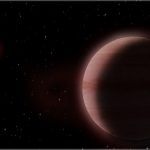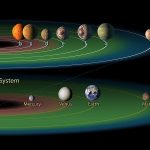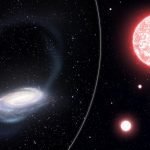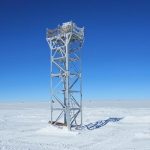Scientists discover a Saturn-sized planet orbiting small, cool star
Using the supersharp radio “vision” of the continent-wide Very Long Baseline Array (VLBA), astronomers have discovered a Saturn-sized planet closely orbiting a small, cool...
Early Martian landscape probably looked like this image of Devon ice cap
Early Mars was covered in ice sheets, not flowing rivers.
Many valley networks scarring Mars's surface were carved by water melting beneath glacial ice, not...
Surprising number of exoplanets could host life, says new study
Our solar system has one habitable planet -- Earth.
A new study shows other stars could have as many as seven Earth-like planets in the...
Astronomers find possible sign of neutron star in supernova 1987A
Two teams of astronomers have made a compelling case in the 33-year-old mystery surrounding Supernova 1987A.
Based on observations of the Atacama Large Millimeter/submillimeter Array...
Scientists find the remnant of an ancient globular cluster
Scientists discovered a stellar stream composed of the remnants of an ancient globular cluster that was torn apart by the Milky Way's gravity 2...
Astronomers pinpoint the best place on Earth for a telescope
Dome A, the highest ice dome on the Antarctic Plateau, could offer the clearest view on Earth of the stars at night, according to...
Sunlight plunge may have triggered ‘snowball earths’
At least twice in Earth's history, nearly the entire planet was encased in a sheet of snow and ice.
These dramatic "Snowball Earth" events occurred...
Scientists tweak the age of the universe at 12.6 billion years, says study
Next time there is an argument about the age of the universe, just say it is 12.6 billion years old.
University of Oregon physicist Jim...
Rare meteorites reveal their parent planetesimal in the early solar system
Most meteorites that have landed on Earth are fragments of planetesimals, the very earliest protoplanetary bodies in the solar system.
Scientists have thought that these...
What happens to planets with hydrogen atmospheres?
When telescopes became powerful enough to find planets orbiting distant stars, scientists were surprised to see that a lot of them didn’t have atmospheres...










